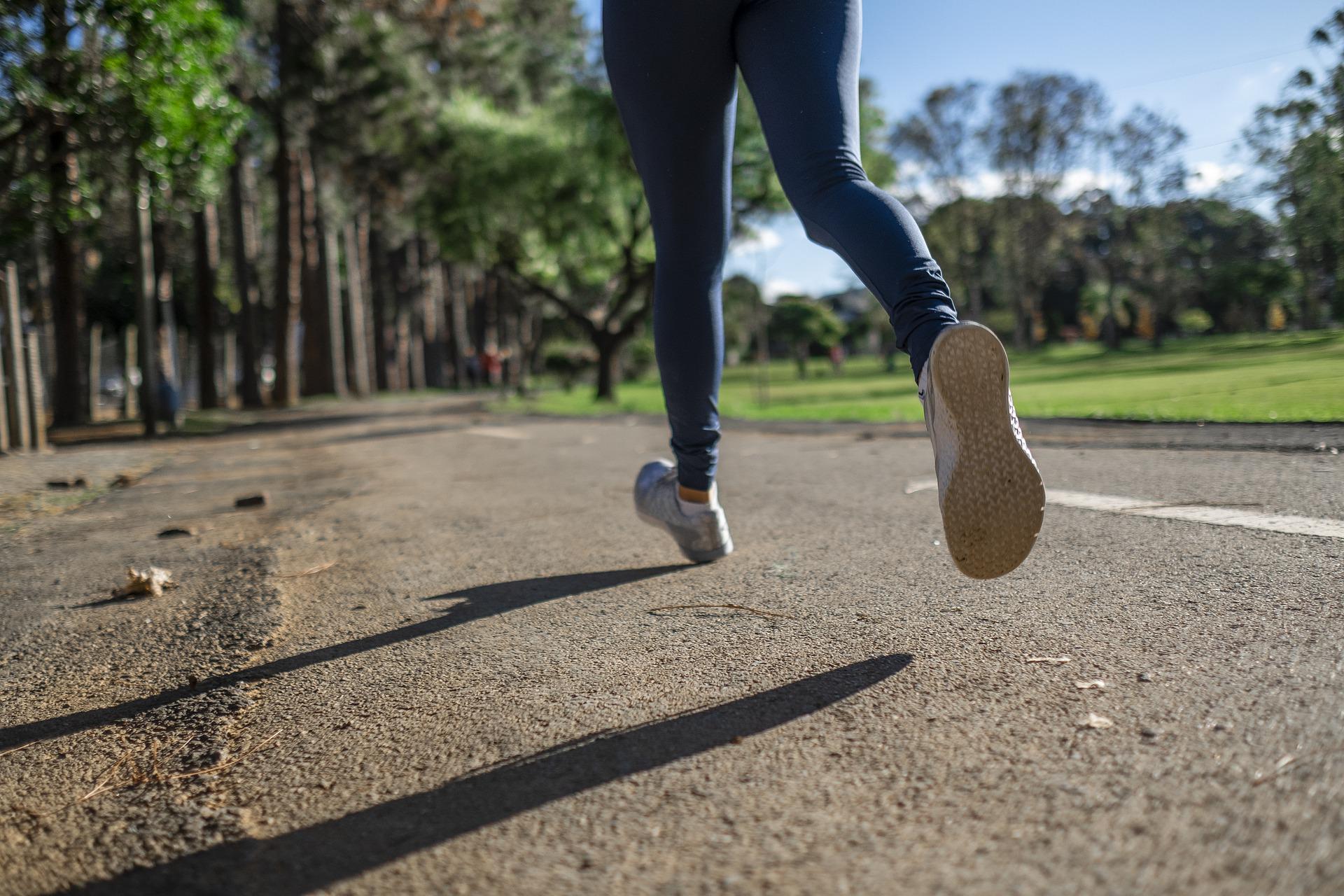But before we jump blindly into the training plan, we would first like to give you 8 valuable tips that will prepare you optimally and prevent you from losing heart halfway through.
Jogging for beginners: 8-week training plan & 8 valuable tips

But before we jump blindly into the training plan, we would first like to give you 8 valuable tips that will prepare you optimally and prevent you from losing heart halfway through.
8 valuable tips for jogging for beginners
1. Get the right running gear
2. Set realistic goals
If you want to increase the effect even more, we recommend that you register for a small hobby or company run. This way you make an additional commitment and gain even more motivation to do it this time.
3. Learn to jog properly
- Start in small stages: Even if you have to force yourself to do it at the beginning, there is a reason why we start with mini-stages in the training plan. For one thing, you won't lose your motivation so quickly, because you won't feel too much pressure. Secondly, you will develop a better sense of pace as you slowly increase the intervals.
- Don't start too fast: It is also important to be patient with your starting pace. By pushing yourself too hard too fast, you risk stopping your training early due to frustration, pain, overload or even injury. It is best to keep yourself entertained during the run.
- Pay attention to your running technique: Without the right technique, your jogging effort may be unnecessarily high. Instead of taking large and cumbersome steps, it is much more effective to take small and loose steps. This may feel strange at first, but in the long run you will only benefit from this technique.
- Choose the right running surface: The best way to train your legs is to regularly expose them to different surfaces. However, as your beginner legs need to get used to the new stimuli, it is a good idea to choose a softer surface, such as a forest floor or tartan. This will protect your joints. But be careful: In the forest, the risk of injury from roots and branches increases.
- Avoid side stitches: Unfortunately, running training for beginners can quickly lead to unpleasant side stitching. To avoid this, we advise you not to eat anything solid for at least 2 hours before the running session and to drink only small portions. Calm and relaxed breathing will also help. Always make sure you breathe out completely.
4. Keep motivation high
But luckily there are good ways and means to keep your motivation high in the long term. Here are some tips that can help with jogging for beginners:

5. Take jogging breaks
You will see that the training plan for jogging beginners does not include training on two consecutive days. While professional bodies can of course cope with this, it is better to give your body rest periods so that it can get used to the new demands step by step. Your cardiovascular system, muscles and bones will thank you.
6. Combine running training with other sports
Team sports: Football, handball or basketball are particularly running-intensive sports. Here, too, you indirectly have a little interval training with you without noticing it directly. Fun and games are a wonderful distraction.
7. Know sports injuries
Side stitch: This is probably familiar to just about everyone. We have already mentioned above how you can avoid side stitches. However, you will also notice that side stitching becomes less and less with increasing running routine.
8. Keep up
Of course you can take a break after your first big goal. But don't wait so long that you have to start from scratch again. The next company run is sure to come and then you can perhaps already aim for the 10 km.

8 Week Training Plan Jogging for Beginners
Notes on the jogging for beginners training plan:
What the goal is: After this 8-week training plan, you will be able to run an easy 5km at a time.
| 1. Week | Number of laps | Training | Focus of the week |
| Day 1 | 8x | 2 min. Jog 2 min. walking | Set yourself a goal: either sign up for a hobby or company run or make a date with a friend for a 5km run in 8 weeks. |
| Day 3 | 8x | 2 min. Jog 2 min. walking | |
| Day 5 | 8x | 2 min. Jog 2 min. walking |
| 2. Week | Number of laps | Training | Focus of the week |
| Day 1 | 7x | 3 min. Jog 1 min. walking | Pay attention to your running style: it's better to take lots of small, loose steps rather than big, lumbering ones. |
| Day 3 | 7x | 3 min. Jog 1 min. walking | |
| Day 5 | 7x | 2 min. Jog 2 min. walking |
| 3. Week | Number of laps | Training | Focus of the week |
| Day 1 | 6x | 4 min. Jog 1 min. walking | Adjust your diet: Learn about a healthy and balanced diet for athletes. |
| Day 3 | 5x | 5 min. Jog 1 min. walking | |
| Day 5 | 7x | 3 min. Jog 1 min. walking |
| 4. Week | Number of laps | Training | Focus of the week |
| Day 1 | 5x | 5 min. Jog 1 min. walking | Hut party: Treat yourself to something nice this week. Maybe a new customized running jersey? |
| Day 3 | 4x | 7 min. Jog 1 min. walking | |
| Day 5 | 4x | 7 min. Jog 1 min. walking |
| 5. Week | Number of laps | Training | Focus of the week |
| Day 1 | 3x | 10 min. Jog 2 min. walking | What has changed? Write down what has already changed/improved in the last 4 weeks. You can also keep this as a kind of running diary in the future. |
| Day 3 | 3x | 10 min. Jog 1 min. walking | |
| Day 5 | 4x | 7 min. Jog 1 min. walking |
| 6. Week | Number of laps | Training | Focus of the week |
| Day 1 | 2x | 15 min. Jog 2 min. walking | Discover new routes: Maybe you are tired of your standard route. Find 2-3 new running routes. |
| Day 3 | 2x | 15 min. Jog 1 min. walking | |
| Day 5 | 3x | 10 min. Jog 1 min. walking |
| 7. Week | Number of laps | Training | Focus of the week |
| Day 1 | 2x | 20 min. Jog 2 min. walking | Supplement with new sports: You don't have to join a club directly, but maybe you can supplement your running training with small strength workouts. |
| Day 3 | 2x | 20 min. Jog 1 min. walking | |
| Day 5 | 2x | 15 min. Jog 1 min. walking |
| 8. Week | Number of laps | Training | Focus of the week |
| Day 1 | 1x | 30 min. Jog | Be proud of yourself: You have completed the 8 week training plan for jogging beginners. Share your pride with those around you! |
| Day 3 | 1x | 30 min. Jog | |
| Day 5 | 1x | 30 min. Jog |



.png)









































































